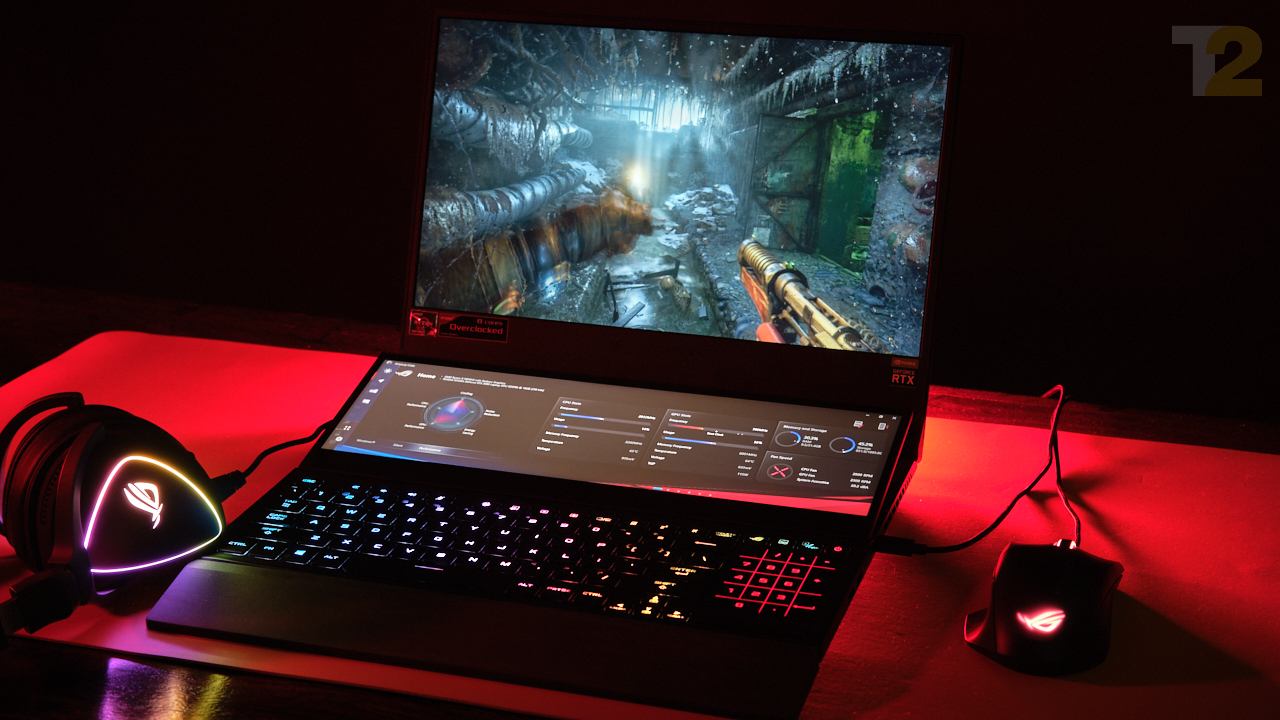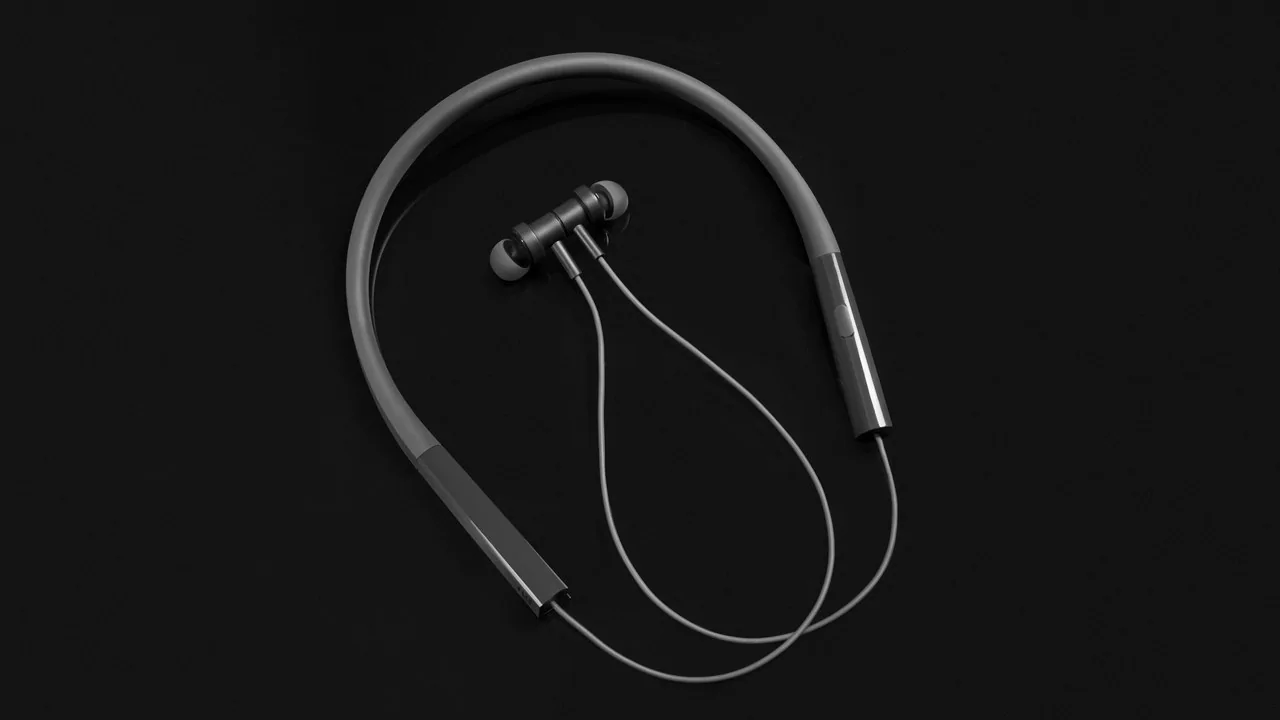Anirudh RegidiSep 01, 2021 15:07:29 IST
Last year, when I first got my hands on ASUS’ line-up of dual-screen ROG gaming laptops, I fell in love with the devices. What ASUS delivered was no-holds barred performance thanks to a fancy cooling setup, dual-screen goodness and an appealing design that managed to deliver a refined gamer aesthetic without going overboard. This year’s update, the ROG Zephyrus Duo 15SE, is more of the same, but with competition heating up, it is perhaps no longer enough.
The design is virtually unchanged from the previous model, but you get a nice upgrade in specs. You get a powerful new AMD Ryzen 9 5900HS CPU — with eight cores and 16 threads, 32 GB of RAM, 2 TB of high-speed SSD storage in a RAID 0 config, a massive GPU upgrade — going from a 2070 Super to a 3080, and a significant upgrade to the display.

The Asus Zephyrus Duo 15 SE’s design is virtually unchanged from the previous model, but it brings a nice upgrade in specs. Image: Tech2/Anirudh Regidi
This is great, but there’s also a problem: at Rs 2,99,999, the Duo 15SE is nearly twice the price of most premium gaming laptops. While the previous Duo easily outclassed similarly specced devices in 2020, ASUS’ own Tuf F15 and the recently launched Lenovo Legion 5 Pro are delivering similar (and sometimes, better) performance for half the price.
These competing devices lack dual displays and a 300 Hz refresh rate (they get FHD 240 Hz and 2K 165 Hz displays respectively), but with prices ranging from Rs 1.4 – 1.8 lakh, there’s no question as to which side the value argument leans.
A closer look at performance
The Legion 5 Pro’s RTX 3070 is two to 22 percent faster than the Zephyrus Duo’s RTX 3080 in three of the five games I tested. In Borderlands 3 and Horizon: Zero Dawn, where the Legion 5 Pro is slower, it still delivers 94 percent and 81 percent of the performance of the Duo.
The Zephyrus Duo is indeed performing well here, pushing almost all games past the 100-fps mark at max settings, but, and despite the additional airflow afforded by the raised secondary display (called ScreenPad Plus), it can’t definitively beat lower-tier cards in cheaper laptops.
In image editing tests involving Photoshop and Lightroom, the Zephyrus Duo is up to 25 percent faster than the Tuf F15 and the Legion 5 Pro. When rendering 3D models in Blender, compiling code and transcoding video, the performance difference between the three devices is negligible. The Duo 15SE has an edge, but I wouldn’t call it a significant one.
Moving on to the displays, the primary display on the Duo 15SE is much improved from the one the previous Duo 15 had in 2020. The resolution and refresh rate are the same at FHD 300 Hz, but the brightness jumps from about 180 nits to 300+. Contrast ratio also jumps from nearly 900 to over 1,100. sRGB coverage is about 95 percent, which is all right for a Windows laptop, and especially one that’s primarily meant for gaming. The Legion 5 Pro’s 16-inch, 2K, 165 Hz, 500-nit display in its 16:10 aspect ratio is in another league, however.
The ScreenPad Plus appears unchanged and remains difficult to read in direct sunlight.
Battery life for regular office work, with the screen set to 120 nits and ScreenPad Plus at max brightness, came in at a very impressive six hours. This is the best battery life I’ve gotten from a gaming laptop yet.
Design and usability
Asus has continued to improve the functionality of ScreenPad Plus, now adding additional, app-specific controls and dials on that secondary display. This can be useful when using apps such as Photoshop, Lightroom, and Premiere Pro, but as with Apple’s touch bar, I personally find keyboard shortcuts faster.
Where the ScreenPad Plus really comes into its own, I think, is when gaming and streaming. Being a secondary display rather than a secondary control surface, ScreenPad Plus works exceptionally well as a deliverer of information.
When streaming, I generally use a second device or phone to monitor chat and the status of the stream. I usually need a secondary display for dealing with OBS as well. With the Duo, all these functions can be relegated to the secondary display, and all the information is fed to you continuously with no noticeable drop in performance.

Being a secondary display rather than a secondary control surface, ScreenPad Plus works exceptionally well as a deliverer of information. Image: Tech2/Anirudh Regidi
The downside to a secondary display is the keyboard and trackpad layout. As I’ve mentioned in the past, having the keyboard and trackpad scrunched up at the bottom of the screen means that the Duo 15 is difficult to use on your lap. You’re forced to push the laptop far forward on your knees, which can make the laptop more tippy, and you cannot type comfortably in an aircraft seat or cab. Given these issues, I think this laptop is best used as a desktop replacement than as a regular laptop for on-the-go gaming or work purposes.
Verdict: A great dual-screen laptop for streamers
The Duo 15SE is an excellent laptop and a worthy upgrade over its predecessor. For certain use-cases, particularly when streaming, the secondary display almost feels essential. Performance is great, the display is bright and fast, and battery life is excellent. If you have a very clear idea of what you want to do with that secondary display, and have Rs 3 lakh to spare, go for the Duo 15 SE, because there’s nothing else like it right now.
If you don’t need that secondary display, however, the Legion 5 Pro and ASUS Tuf Dash F15 are significantly cheaper and just as capable.











